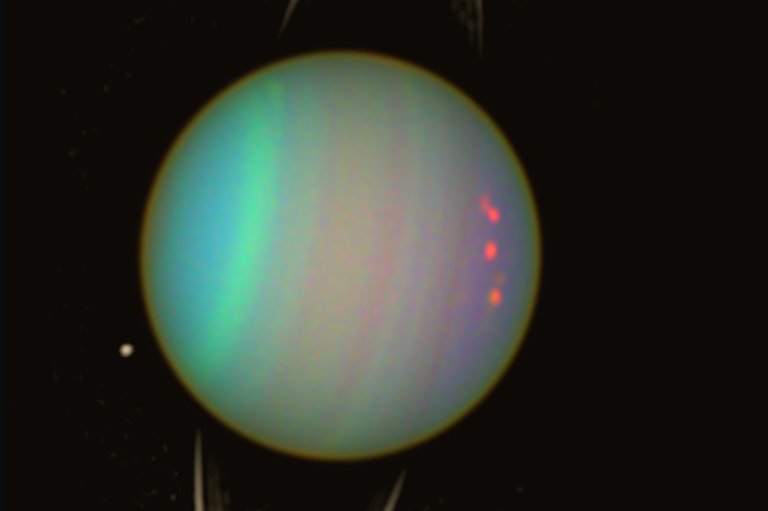
A view of the planet Uranus in 2004. A new study by NASA says four of Uranus's moons could have oceans of water under its icy crust. File Photo by NASA/UPI | License Photo
May 5 (UPI) -- NASA scientists concluded that four of Uranus' largest moons likely contain an ocean layer of water between its core and icy crust.
The NASA study announced Thursday is the first to detail the evolution of the interior makeup and structure of all five large moons -- Ariel, Umbriel, Titania, Oberon and Miranda.
It suggests four of the moons hold oceans that could be miles deep after scientists had previously considered the other moons too small to keep an internal ocean from freezing, with Titania, the largest of Uruanus' seven moons the most likely to retain the necessary heat.
"When it comes to small bodies -- dwarf planets and moons -- planetary scientists previously have found evidence of oceans in several unlikely places, including the dwarf planets Ceres and Pluto, and Saturn's moon Mimas," said Julie Castillo-Rogez of NASA's Jet Propulsion Laboratory in a statement. "So, there are mechanisms at play that we don't fully understand."
Czech Republic latest nation to sign on to NASA's moon-focused Artemis Accords
NASA said it came to the discovery after re-examining data originally gathered from its Voyager spacecraft that gathered detailed information on Uranus during two flybys in the 1980s.
Using that data along with traditional telescope observations on Earth, NASA scientists built computer models of the planet infused with additional findings from NASA's Galileo, Cassini, Dawn, and New Horizons.
The researchers also added insights into the chemistry and the geology of Saturn's moon Enceladus, Pluto and its moon Charon, and Ceres. Those planets are also icy bodies around the same size as the Uranian moons.
NASA said it came to the discovery after re-examining data originally gathered from its Voyager spacecraft that gathered detailed information on Uranus during two flybys in the 1980s.
Using that data along with traditional telescope observations on Earth, NASA scientists built computer models of the planet infused with additional findings from NASA's Galileo, Cassini, Dawn, and New Horizons.
The researchers also added insights into the chemistry and the geology of Saturn's moon Enceladus, Pluto and its moon Charon, and Ceres. Those planets are also icy bodies around the same size as the Uranian moons.
NASA's James Webb Space Telescope team wins Wernher von Braun award
NASA has been investigating possible water on other moons. In 2005, scientists saw what they believe were watery plumes erupting from the surface of Saturn's moon Enceladus.
The space agency plans on launching the Europa Clipper spacecraft next year which will examine the possibility of water plumes and an ice-covered ocean world with possible plumes the Jupiter moon of Europa.
NASA has been investigating possible water on other moons. In 2005, scientists saw what they believe were watery plumes erupting from the surface of Saturn's moon Enceladus.
The space agency plans on launching the Europa Clipper spacecraft next year which will examine the possibility of water plumes and an ice-covered ocean world with possible plumes the Jupiter moon of Europa.
No comments:
Post a Comment